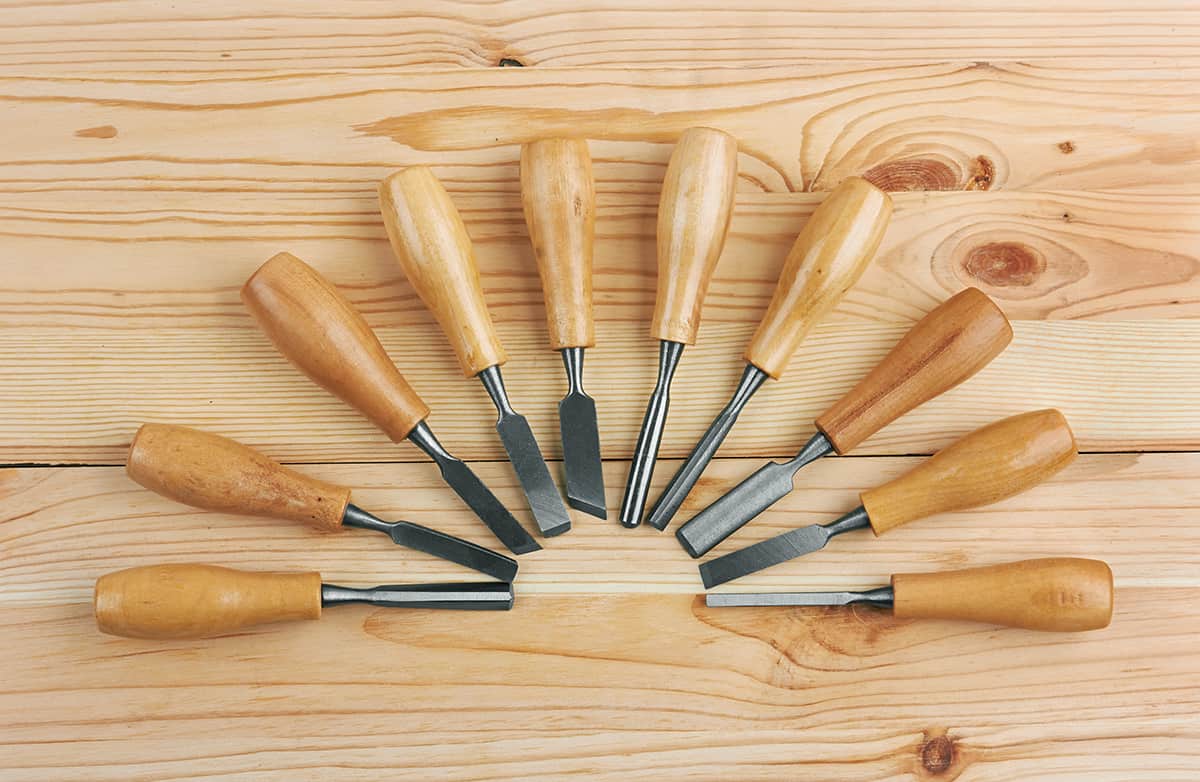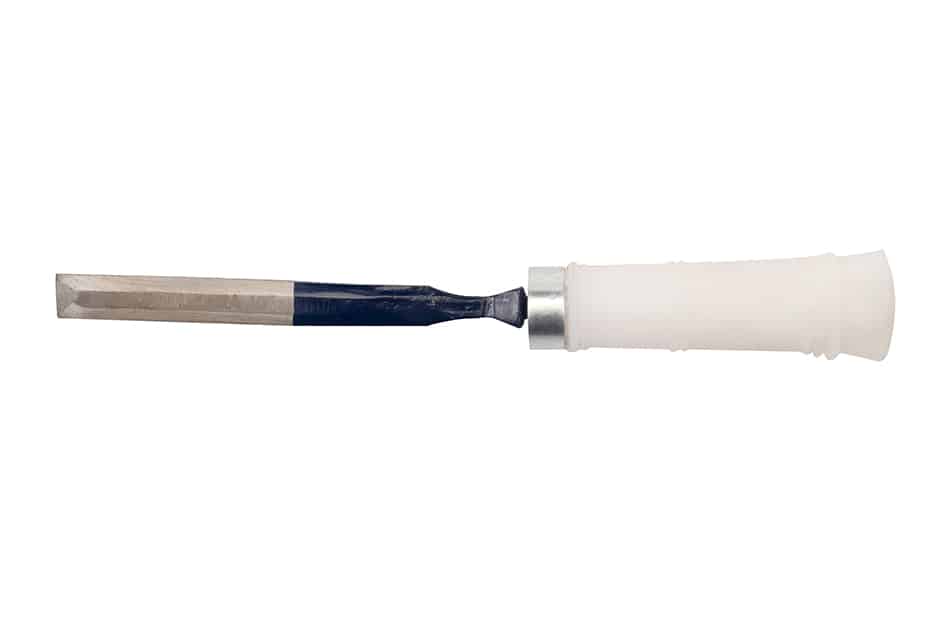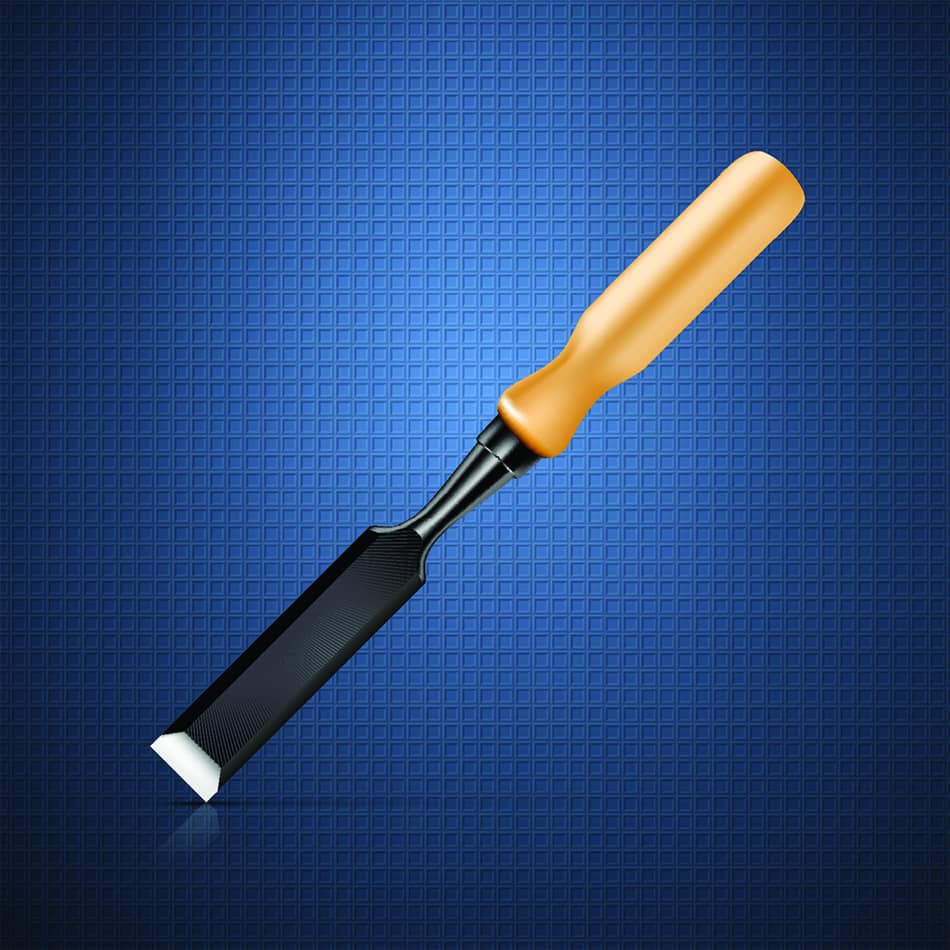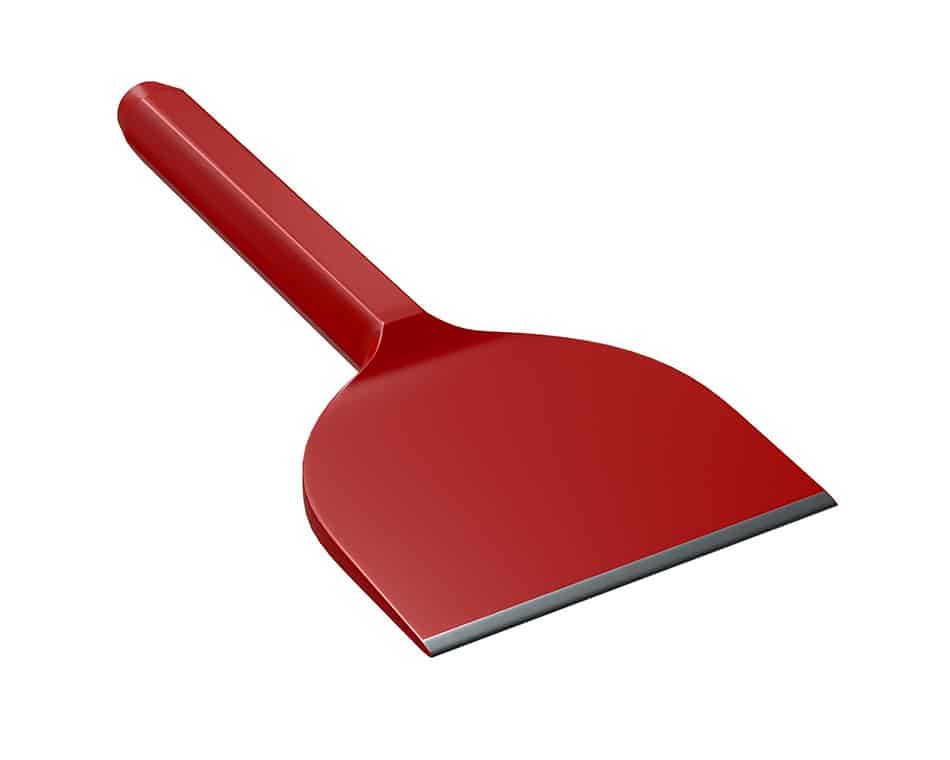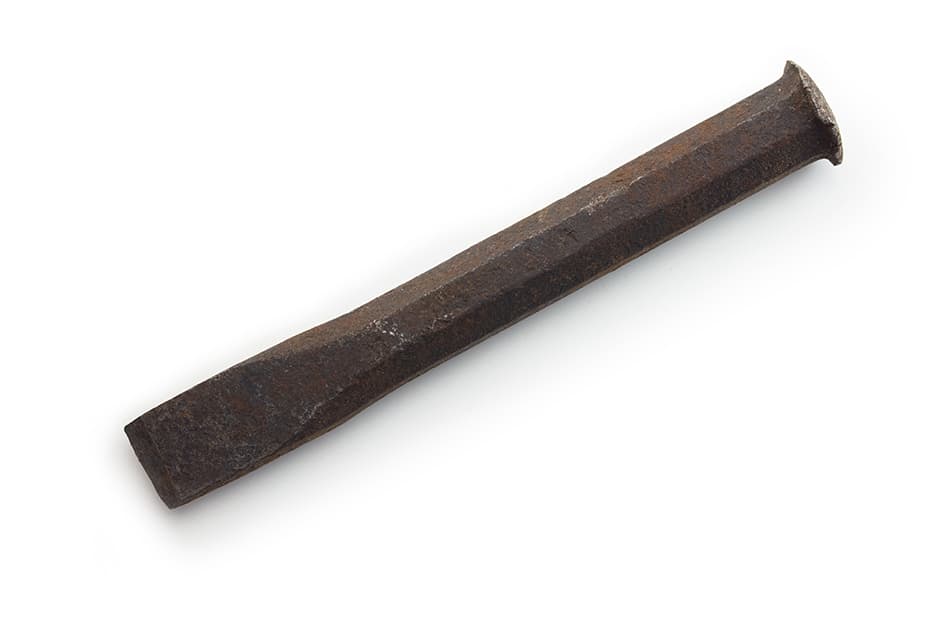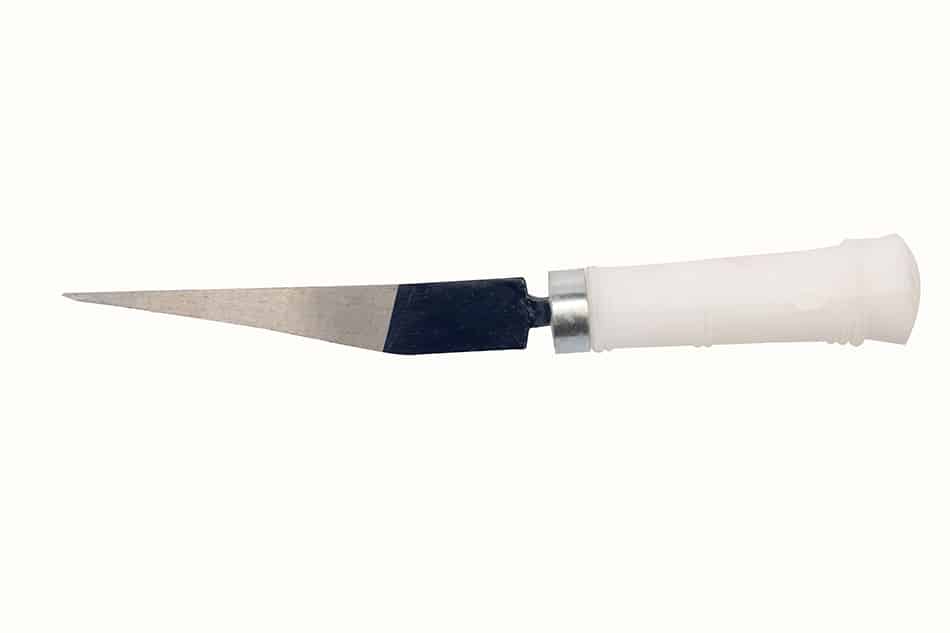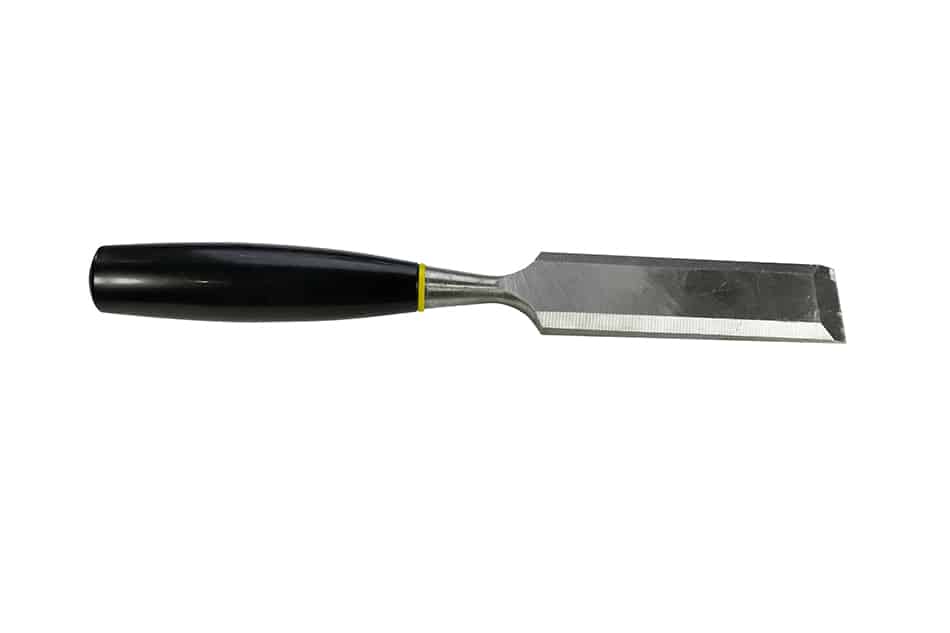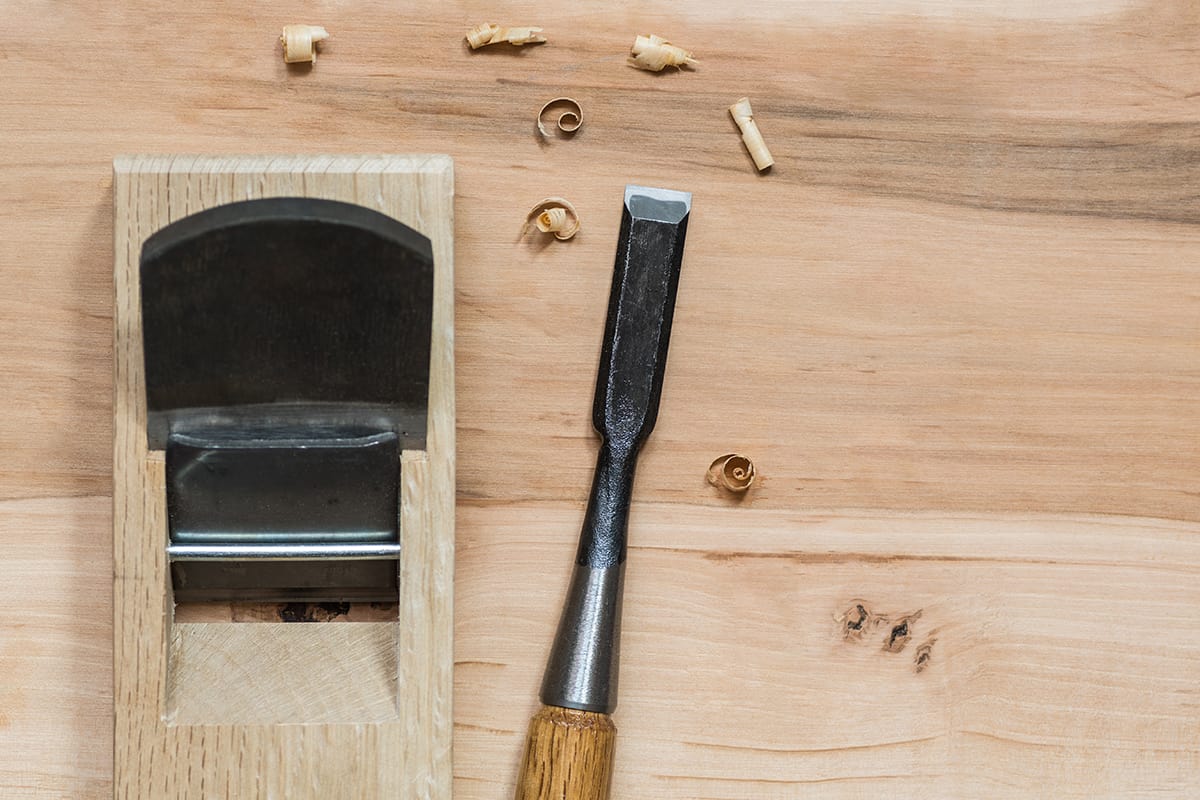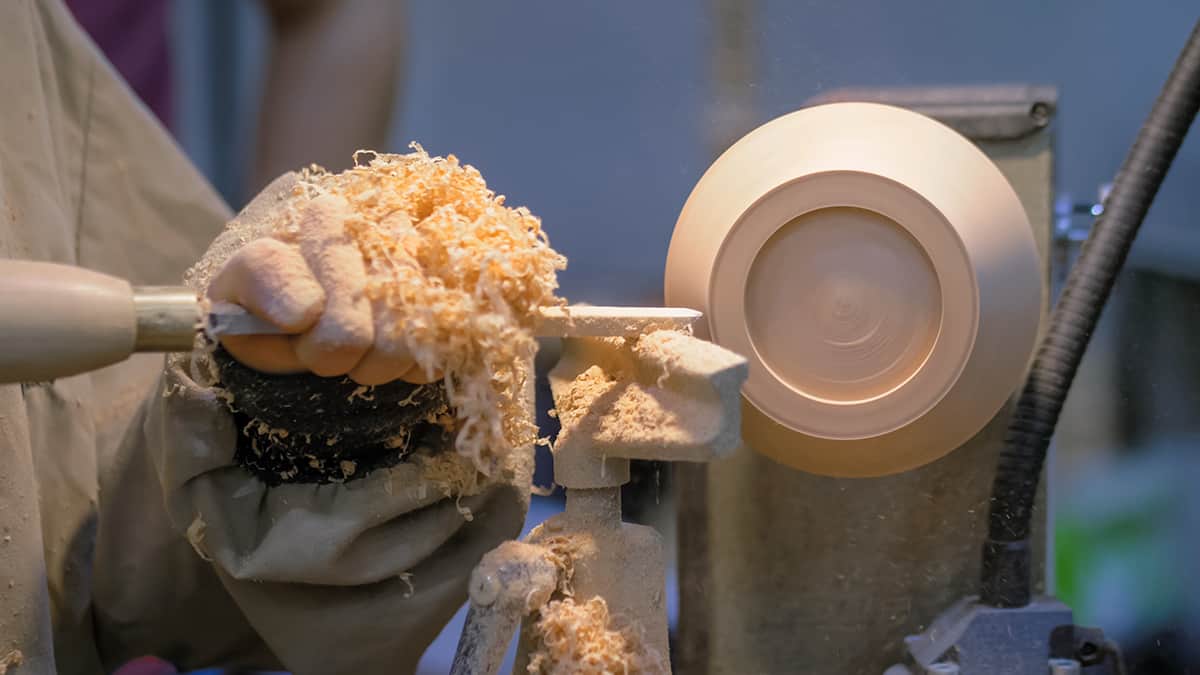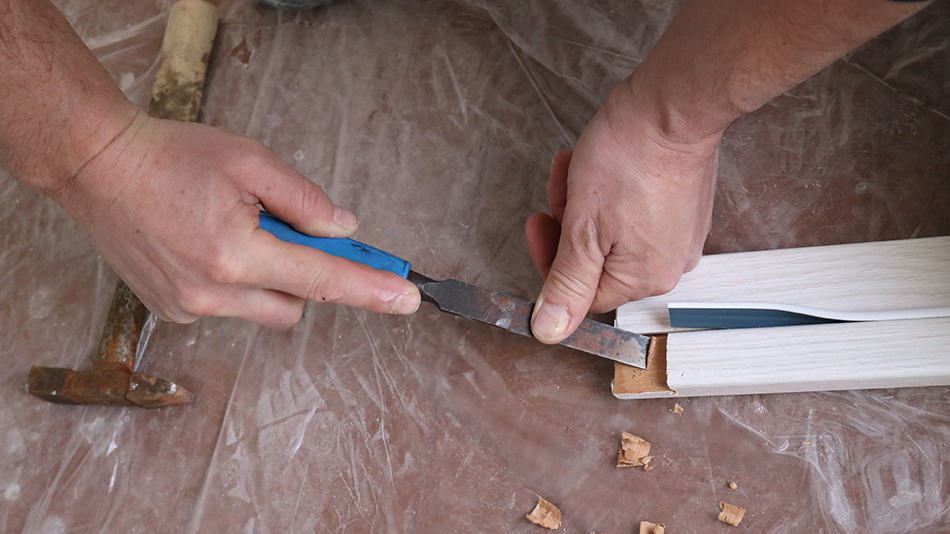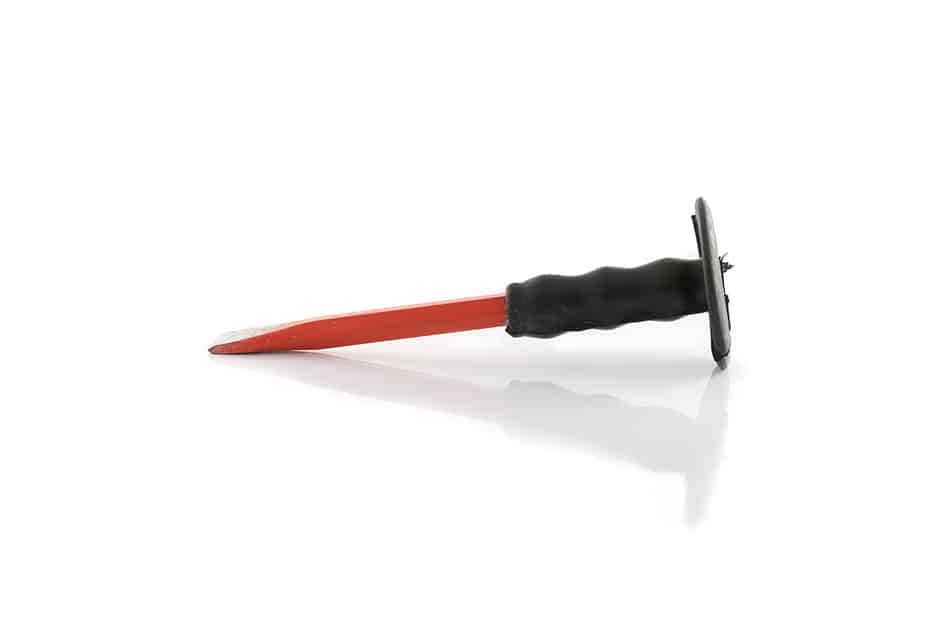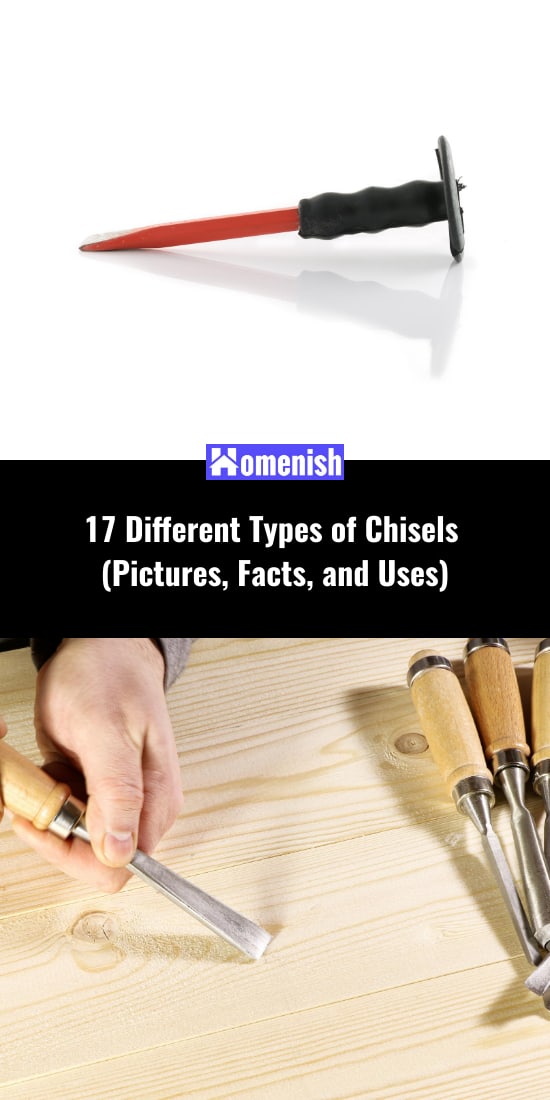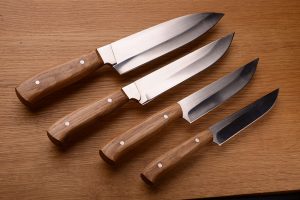A chisel looks deceiving. On the surface, it appears to be a simple tool that has a few purposes. But this simple tool can do a lot of things. It can be handy in carving and cutting materials ranging from stone, metal, and wood. It is a fixture in construction sites and woodworking shops. Chisels are commonly used by professionals and hobbyists alike.
History of Chisel Tool
The tool gets its name from the old French word cisel (to cut) or the Latin word “seco” (I cut). Many experts suggest that the modern-day chisel traces its roots to the stone hand ax, a tool that’s shaped like an almond with a sharp end. The Egyptians used chisel-shaped flints as early as 8000 B.C.
Later on, those tools would evolve. First, flints made of copper and later on, bronze, were developed for working on materials like soft stone and wood. Intricate sculptures in ancient civilizations elsewhere in the world, such as Central and South America, reveal how chisels were used extensively by our forefathers.
What Is a Chisel?
A chisel has two primary parts—the blade and handle. Commonly forged from a piece of steel, the blade typically has a cutting bevel at one end and a socket or tang at the other. The handle, meanwhile, is often made from hardwood or synthetic material. It is also often contoured to provide the best grip for the user.
The blade of the chisels comes in different width sizes. For mortising in small doors, a chisel with a width of ¼ inch should be sufficient for the task at hand. But the larger cousin, the ½ inch variety, is long enough for most mortising jobs.
What Do You Use Chisels For?
Chisels are as versatile as any hand tool. You’ll find them essential in woodworking, particularly in creating furniture and cabinets. These tools are also handy in manual wood joinery projects like mortise and dovetail. You can use chisels in metalwork, too.
Chisels are also widely used in the aviation industry, particularly in the manufacture and refurbishing of turbine blades. At home, chisels are used for renovation and construction projects like timber framing of barns, creating furniture and cabinets.
As you will learn by reading this page, there are many kinds or types of chisels that can be used in different ways.
Types of Chisels
Chisel types range from small handheld tools to large ones. Small chisels are designed for working on tiny details, while larger ones are for removing sections of stone, wood, bricks, and other materials.
Bevel Edge Chisel
If there’s a workhorse in the chisel family, then the bevel edge chisel has got to be it. This hand tool is also considered to be the most common chisel found in shops. And part of this trait can be attributed to it being extremely versatile. The bevel edge chisel can get into acute angles thanks to its bevel edges on its blade, allowing it to get into tight corners and areas unlike other kinds of a chisel.
When choosing a bevel edge chisel, consider the back of the tool. It should be flat or a bit hollow for easy sharpening. It must also be comfortable in the hand aside from holding a good edge. You’d also want the handle to be impact resistant, capable of enduring the repeated blows of a hammer or mallet.
Bench Chisel
Shorter than a bevel edge chisel, a bench chisel is another common and useful chisel type. On average, its handle and blade are both 5 inches long. An ideal choice for cabinet and furniture makers, the bench chisel is great for pairing, trimming, and chopping.
Since a bench chisel is short compared to other chisel types, it is easier to handle and control. It can also be beveled on the sides, allowing access to dovetails. Straight-edged bench chisels, meanwhile, are thicker and heavier. These are better suited for carving big sections of hard material. Whether you’re picking a straight or beveled-edge bench chisel, you’ll find chisels available in sizes ranging from 1/16 to 3 inches.
Brick Chisel
As the name suggests, brick chisels are used for creating smooth cracks and cuts on bricks. Brick chisels are also called bolster chisels. With its wide blade, it can crack through items, including masonry blocks. It can also be used in cleaning surfaces of mortar and concrete. But it can’t cut through metal such as reinforced bars because it is not made of hardened steel. It is generally used with a lump hammer for better efficiency in cracking bricks, blocks, and stone.
In buying a brick chisel, procure one that has a heavy-duty hand guard to protect your hand when using the tool. It’s also advisable to buy a chisel that has its parts (head, edge, and handle) forged together to form one solidly-built tool. This way, you can be assured of the toughness or durability of the tool. Speaking of the head, it should be domed to prevent mushrooming and ensure that it would last for many years.
Butt Chisel
Butt chisels are so named because they are used for installing butts and hinges. But make no mistake about it, butt chisels are also widely used for other purposes such as cleaning joints on cabinets, desks, wardrobes, and other similar furniture. You can also use them in trimming tiny edges on intricate woodwork. With its compact shape, a butt chisel enables you to gain more leverage in cramped spaces.
Butt chisels are recommended to novice cabinet makers because they are easy to control. Moreover, the short blade of the butt chisel is sturdy enough for most applications. Butt chisel blades can be straight-edged or bevel-edged.
This type of chisel has a blade with an average length of 2.5 to 3 inches long. Its handles are also usually elliptical, with its ends rounded. This way, the ends fit snugly in the palm of a worker’s cupped hand. As for the blade, its width can range from a quarter of an inch, half an inch to a full inch.
Corner Chisel
A corner chisel is named as such because of the way its blade is designed. Its blade is angled at 90 degrees, allowing users to create a perfect corner in wood. With a corner chisel, you won’t have to use measuring tools in order to craft a perfect corner. Predictably, this chisel is highly popular among carpenters, particularly those who make cabinets.
Another important purpose or use of corner chisels is creating mortise and tenon joints that connect two pieces of wood. For many years, mortise and tenon joints have been used by woodworkers in adjoining pieces of wood.
Masonry Chisel
Also known as mason’s chisel, the masonry chisel can cut through hard materials such as brick, concrete, and stone. Thanks to its wide and flat blade, it can also be used in removing excess mortar. Those with wider cutting edges are also called ‘mason’s bolster.’ Relatively heavy, this type of chisel often has a handle to protect the user. It is often attached to jackhammers and hammer drills for demolition purposes.
Using a mason’s chisel to cut through a material is simple even for beginner DIYers. First, you need to mark the lines. This can be accomplished by marking two parallel lines on each side of the stone or material to be cut. Using the lines as a guide, you will then create a deep and pointed channel (often “V” shaped). Use a hammer to drill the blade into the material. This will enable the chisel to weaken the structure and subsequently cut through it.
Mortise Chisels
As its name suggests, this chisel is named as such because of its main purpose, which is cutting mortise joints. It is way durable compared to bench chisel, which lacks the strength, length, and thickness to lever out stone or wood nor withstand the crushing and continuous blows of a mallet.
The mortise chisel has a thick, heavy blade to serve its purpose. It also has huge forged bolsters designed to take a lot of pressure. It often has a capped handle so that it can withstand being hammered. It is edged to an angle between 30-40 degrees.
Sash Mortise Chisel
A lighter version of the mortise chisel, the sash mortise chisel is also relatively thinner compared to its bigger brother. The word ‘sash’ in the name of this chisel suggests that this tool is built for furniture-scale mortising. As such, it is designed to work on shallow mortises located in mullions of windows.
Sash mortise chisels work well for deep mortises. It’s particularly ideal if you always frill out the waste when mortising. The bad news is that sash mortise chisels don’t come in a wide range of sizes anymore, no thanks to the wide variety of mortise chisels available in the market.
Paring Chisels
Traditionally used for cutting off thin slivers of wood, paring chisels are long and thin. These chisels often have bevel sides. But unlike mortise chisels, paring chisels aren’t designed to be hit with a mallet.
Delicate yet flexible, a paring chisel is best suited for fine work. It commonly has a long handle attached to a tang and provides the worker with maximum control. Thin and graceful, the handle is intended to be pushed and not struck with a mallet. The thin handle likewise puts the weight of the tool at the cutting edge, making the paring chisel easier to maneuver.
Its blade is long, flat, and thin. It tapers near the cutting edge, giving the user the capability to create fine cuts when cleaning out grooves. The length of the chisel also naturally minimizes the impact of the side-to-side movement of the hand. It also allows the user to easily see if the chisel is at the right angle to work.
Another important characteristic of a paring chisel is its low cutting angle. A paring chisel has a cutting angle of around 20 degrees. This is a lot lower compared to other chisel types like bench chisel (25 degrees) and Japanese chisels (30 to 35 degrees). The low cutting angle results in a fragile edge that possesses superior cutting ability, more control, and less need for a mallet.
Slick Chisel
Slick chisels are related to paring chisels because these are essentially bigger versions of the latter. This chisel is best for trimming extra thin pieces of wood from the workpiece. Similar to paring chisels, slick chisels have a low cutting edge ranging from 20 to 30 degrees. The handle, meanwhile, is often shaped like a baseball bat. Despite its shape, it offers a comfortable grip.
One of the largest chisel types, slick chisels have a wide blade and long flat back. This design allows the slick chisel to make quick work of large notches. The long handle of a slick chisel also enables you to have the leverage in shearing curls of wood with a single motion of your arms. But just like the paring chisel, a slick chisel is not meant to be struck with a mallet.
Dovetail Chisel
You’ll likely know what a dovetail chisel is designed for just by its name. With a dovetail chisel, you can easily create a dovetail as well as finish off its joints.
Dovetail chisels are characterized by their long blades with beveled edges. The long and thin blade makes this tool handy in cleaning out the joint. The blade’s triangular cross-section also lets the tool fit in tight corners of dovetails. Meanwhile, the back of the blade is usually slightly hollow for minimal friction.
Japanese Chisel
Chisels are called ‘nomi’ in Japan; therefore, Japanese chisels are also referred to as such. Compared to their Western counterparts, the Japanese chisels are a bit thicker. Also, there are differences in the way that Japanese chisels are manufactured.
Unlike chisels made out west, which consist of two parts (blade and handle), a Japanese chisel consists of four parts. Aside from the blade and handle, the two other parts are steel hoop and tapered ferrule.
Another difference is the steel from which the blades are made from. Japanese chisels are traditionally made of at least two steel pieces, unlike Western-style chisels, which are usually made from a single piece of steel. Most Japanese chisels have a combination of hard and soft steel. As a result, this chisel type is doubly strong with enhanced shock resistance. Moreover, most Japanese chisels have handles made of wood. The handles are made of wood ranging from ebony, white or red oak, and boxwood.
Japanese chisels are also available in various types. For most shop tasks, the oire chisel is the best choice. Available in various widths and blade lengths, the Japanese oire chisel usually has a thin blade. It also has a top hoop allowing it to be hit.
Another variation is the atsu chisel, which looks like a butt chisel on the surface. A closer look, however, reveals that it is stronger and thicker. Often used by cabinetry makers and carpenters in making large joints, the atsu chisel has blade lengths ranging from ½ inch to 2 inches. The width also varies, from as narrow as ⅛ of an inch to as wide as 3 inches.
Mukomachi chisels are the Japanese version of mortise chisels. These chisels are designed to be hit for making small grooves or mortises. It usually has a narrow blade with the neck having the same thickness as the cutting edge. This gives the blade enough strength to create deep cuts.
Other Japanese chisel types include Tsuki chisels and slicks that are used for smoothing joints and cleaning mortises and Kote chisels for cleaning out long joints like sliding dovetails and housing joints.
Skew Chisel
One of the most essential tools for woodworkers, skew chisels are unmatched when it comes to smoothing a spindle. For example, you have just rounded out a square piece of stock into a smooth round spindle. With a skew chisel, you can fine-tune that spindle with a smooth finish. You can also use a skew chisel in creating V-cuts, beading, and tapering.
It features a long and bevel-edge blade with an angled tip. The edge’s long point is referred to as the toe, while the shortest edge is known as the heel. DIY woodworkers, however, should not feel overconfident when using this chisel. Many woodworkers, particularly novice ones, find using the skew chisel challenging. It requires a sufficient amount of pressure and digging in order to work.
Also, even the slightest mistake in using a skew chisel can result in a dig-in or gouge of the wood. Bad dig-ins can even result in the tool being pulled from the worker’s hands. But this is not to say that the skew chisel is the hardest tool to master. With the application of proper techniques and careful actions, you can easily avoid these mishaps.
Socket Chisel
Socket chisels aren’t as common as the other types of chisels discussed in this article. One potential reason is that these are quite expensive. Still, it doesn’t mean you should not consider getting one, especially given its use. Socket chisels are strong, durable, and reliable. You can hit them with a mallet, and they won’t crack under pressure. A socket chisel is a must-have for heavy-duty woodworking.
Socket chisels are widely used by carpenters and boat builders. Because of their size– some are less than 10 inches long– they can be easily used in working in hard-to-reach areas. The handles of socket chisels are also durable, unlike tang chisels. The handles can also be easily replaced. Another thing to love about socket chisels is their excellent balance.
Framing Chisel
Widely used in timber framing, boat building, and construction, framing chisels are necessary tools in making wooden structures. It is designed to withstand repeated and crushing blows from a mallet or hammer. It is used in making deep cuts in woodwork.
Compared to firmer chisels, a framing chisel is wider, thicker, and longer. Its blade can be bevel-edged or straight-edged. And because it is designed to be hit with a mallet, it usually comes with features like capped handles and sockets. The cutting edge of a framing chisel is 25 to 30 degrees. Most framing chisels are hand-forged from a single piece of steel, making it extra durable as the parts are less likely to break.
Concrete Chisel
With a concrete chisel, you can break up sidewalks, concrete floors, and similar surfaces during scenarios wherein the use of an air hammer would not be practical. Unlike other chisel types that have a sharp edge, a concrete chisel has a sharp and pointed tip. This allows it to break apart concrete instead of reshaping or sharpening them.
You can also use a concrete chisel to remove small portions of concrete. A concrete chisel can also come in handy during demolition, more so when it is inserted into a rotary hammer. This chisel type may also be useful in sculpting and rockhounding.
Power Chisel
As you may deduce from the name, a power chisel is used with an electric grinder motor. It can do the same work as a traditional handheld chisel, although it can do so at a faster rate. Efficiency is also better compared to other traditional chisel types. The motor of a power chisel can enable it to deliver low vibrating yet deep penetrating cuts.
You can use a power chisel in rough shaping and detail carving. It’s also extremely useful in creating deep profiles. Aside from being efficient, you’ll love that the power chisel is safe to use. It only engages and starts to move when you press it onto the timber. This is an outstanding feature of the power chisel that makes it different from traditional chisel types.
Lastly, power chisels are versatile. You can change chisel profiles according to your needs. Buy a power chisel starter kit, and you’ll see the wide range of chisel profiles that you can choose from.
